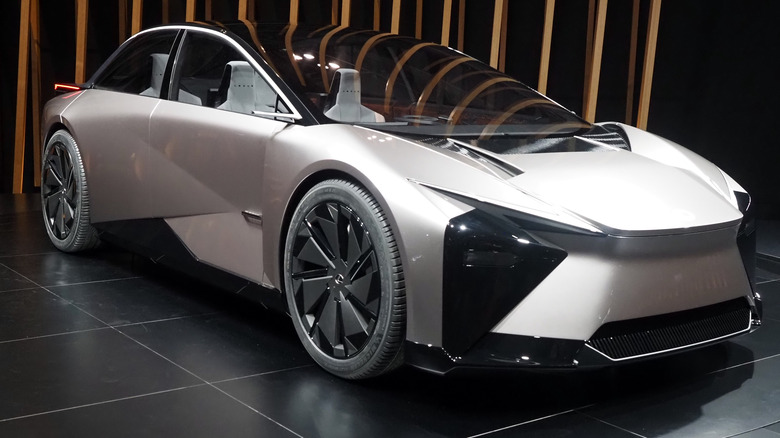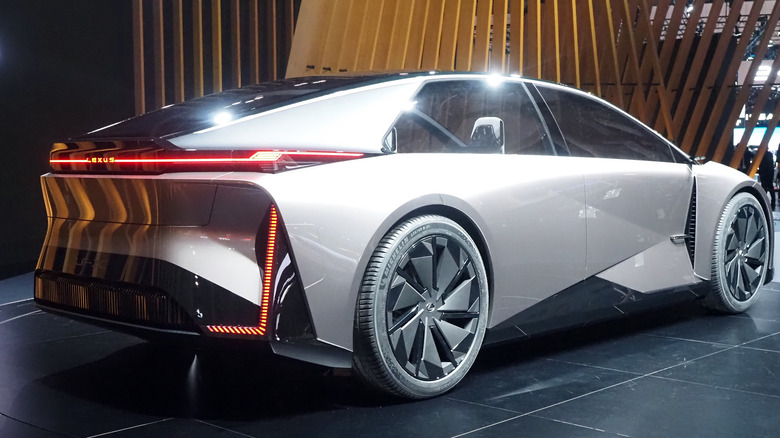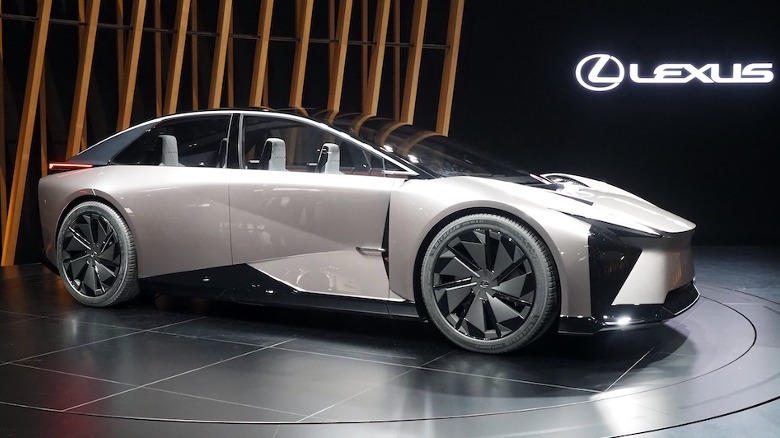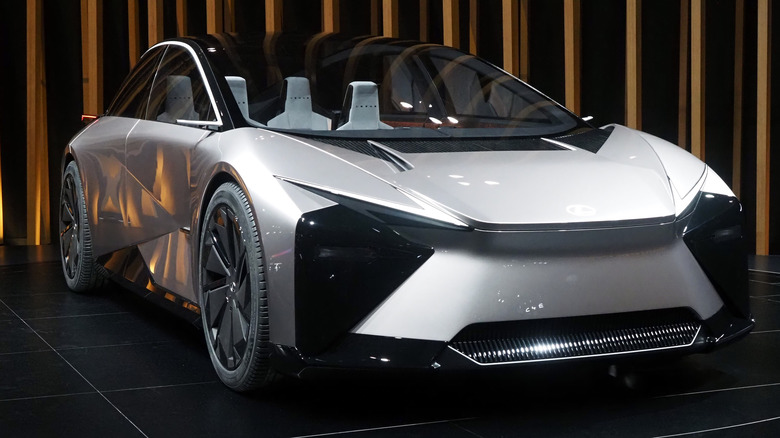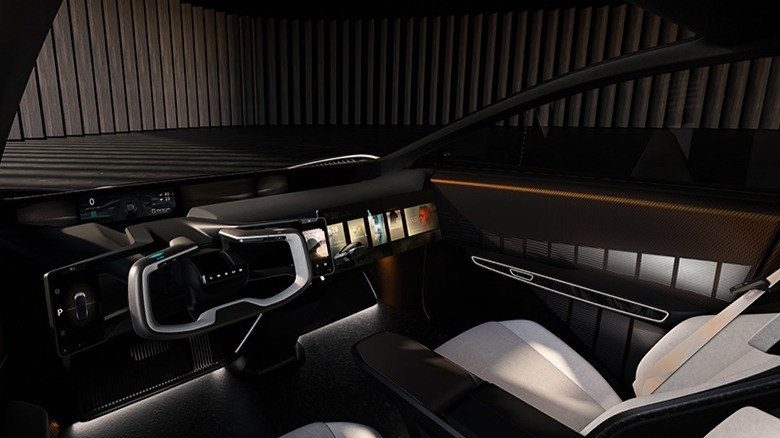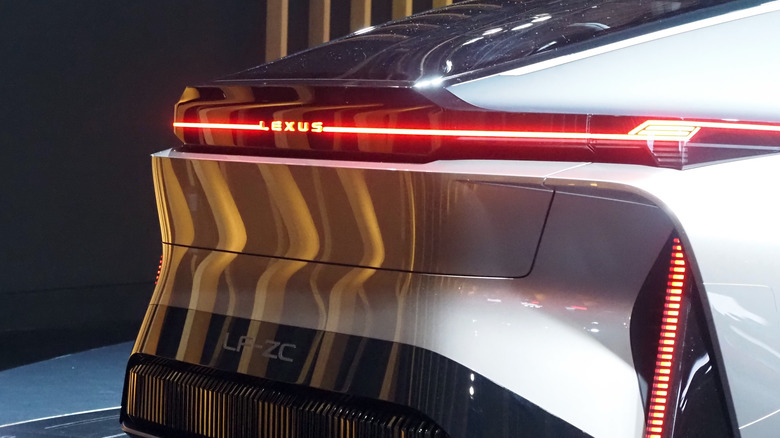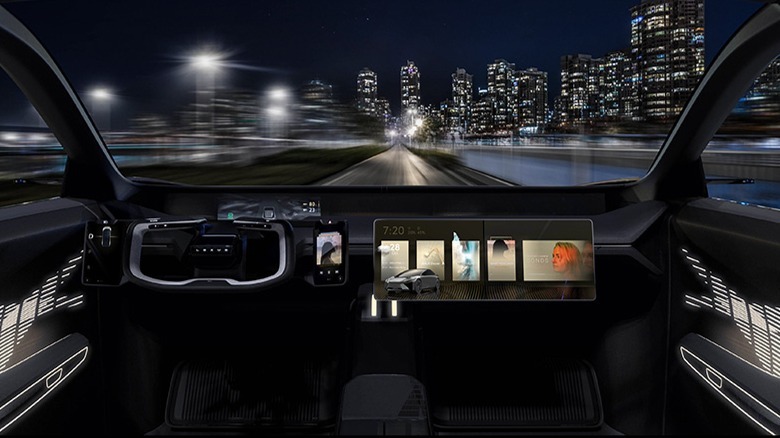This Lexus LF-ZC Electric SUV Concept Has A Production Future Sooner Than You'd Think
Don't be fooled by the "concept" part of the Lexus LF-ZC concept's name. The Lexus Future Zero-emission Catalyst may have been described as "a BEV vision concept" at the Japan Mobility Show 2023, where it made its global debut, but the all-electric SUV's production future is guaranteed.
In fact, Lexus says we can expect a production version of the LF-ZC in 2026. It's a similar strategy to the one we saw back in 2014 when Lexus confirmed its LF-LC concept would be launching as a production vehicle. In that case, it was the LC we found pulling up in Lexus dealerships.
What this new concept does is give us a chance to get used to a new — and likely to be divisive — design language for Lexus. While the 2023 Lexus RZ sticks fairly closely to the brand's existing aesthetic, the LF-ZC is not so eager to fit in. However, the changes aren't just down to design preferences.
Better packaging makes for a smarter, more flexible EV
Instead, Lexus says it's part of a push to better vehicle packaging, effectively minimizing the necessary components of an EV drivetrain. The structure is produced using gigacasting, where huge sections of the EV — in this case, the front, center, and rear — are produced as complete parts. For the LF-ZC, the battery is then placed into the center section.
It's not just a decision that helps keep the center of gravity low but one that keeps Lexus' options open. By making the front and rear sections structurally independent, they can be reused with future battery developments without needing to redesign the EV from scratch. Even in the factory, Lexus' changes improve efficiency: a self-driving assembly line sees incomplete vehicles move autonomously between build stations.
As for the batteries themselves, Lexus says it's using a new prismatic structure cell with greater energy density. The LF-ZC should make full use of that power — delivering around twice the range of current EVs — by virtue of the super-slippery exterior design.
Lexus' design language is still controversial
That design is certainly angular. Lexus says the wind tunnel has played a significant role, helping trim the LF-ZC's drag coefficient to approximately 0.2. There's a new version of the Lexus grille, while integrated vents in the front fenders highlight the concave surfacing on the doors.
The hood is low, and the glasshouse is expansive, helping improve front visibility. Meanwhile, there's a panoramic glass roof and a fully flat interior floor, while the front occupants have been pushed forward but positioned low to exaggerate the sense of space.
Inside, there's been a simplification of the controls. A single digital touchscreen on the right handles HVAC, multimedia, phone, and other infotainment features; one on the left takes care of things like shifting, drive mode selection, and ADAS settings. The driver's instrumentation is set back, with a projection system that — like a heads-up display — beams key information into the driver's line of sight.
Ready to eclipse the Lexus RZ
The dashboard will run a new Arena OS, handling everything from steer-by-wire settings to over-the-air (OTA) updates. The LF-ZC debuts a new "Butler" AI, which Lexus promises will be self-learning to customize its offerings and suggestions based on the patterns of the individual driver. It'll be sufficiently insightful, the automaker claims, to make suggestions and identify preferences that weren't even conscious to whoever is behind the wheel.
Factor in a host of new environmentally-conscious materials, plus the DIRECT4 electric all-wheel-drive system and a new digital cockpit that can be heavily customized, and you've got a car that is already shaping up to be a massive improvement on the current Lexus RZ.
With that the only EV in the current Lexus line-up, things are going to have to change in short order if the automaker is to keep to its public roadmap of becoming an all-electric brand by 2035. While the LF-ZC may not be the prettiest of EV SUVs we've seen, it's another important step to giving Lexus' range the makeover it needs to hit its ambitious green goals.
